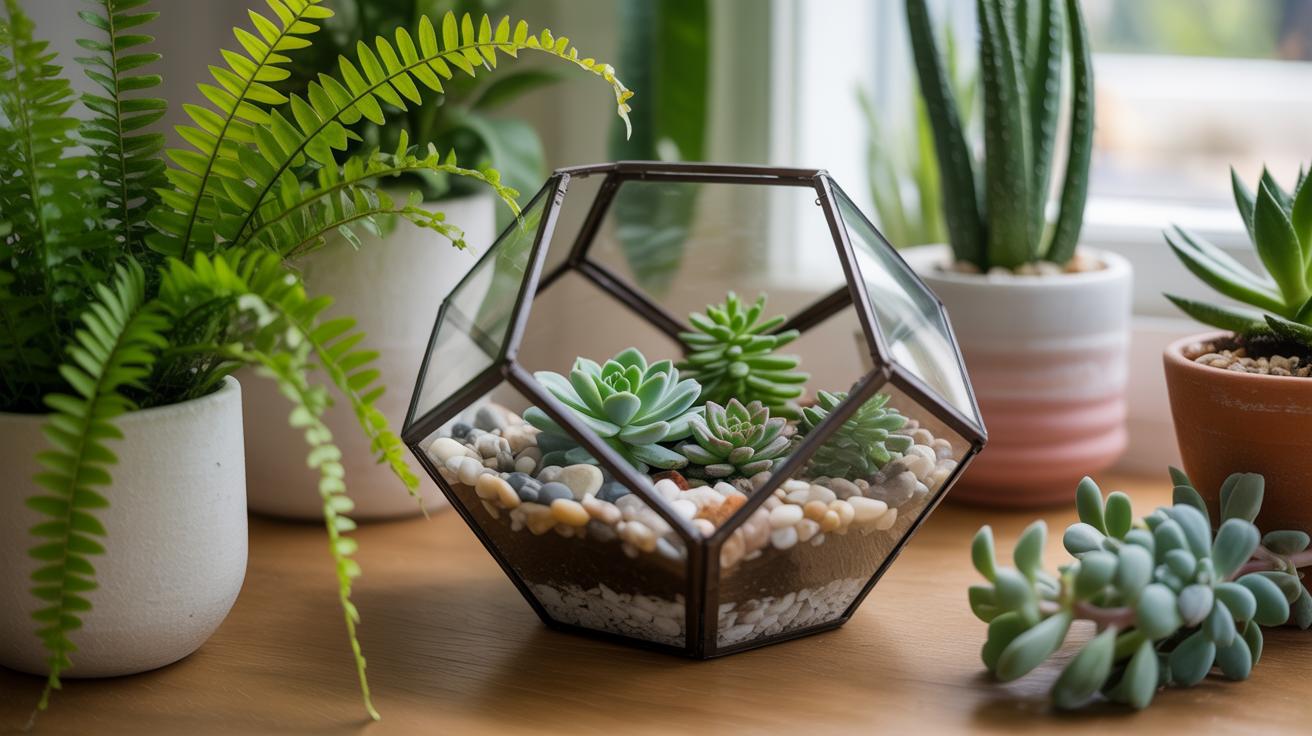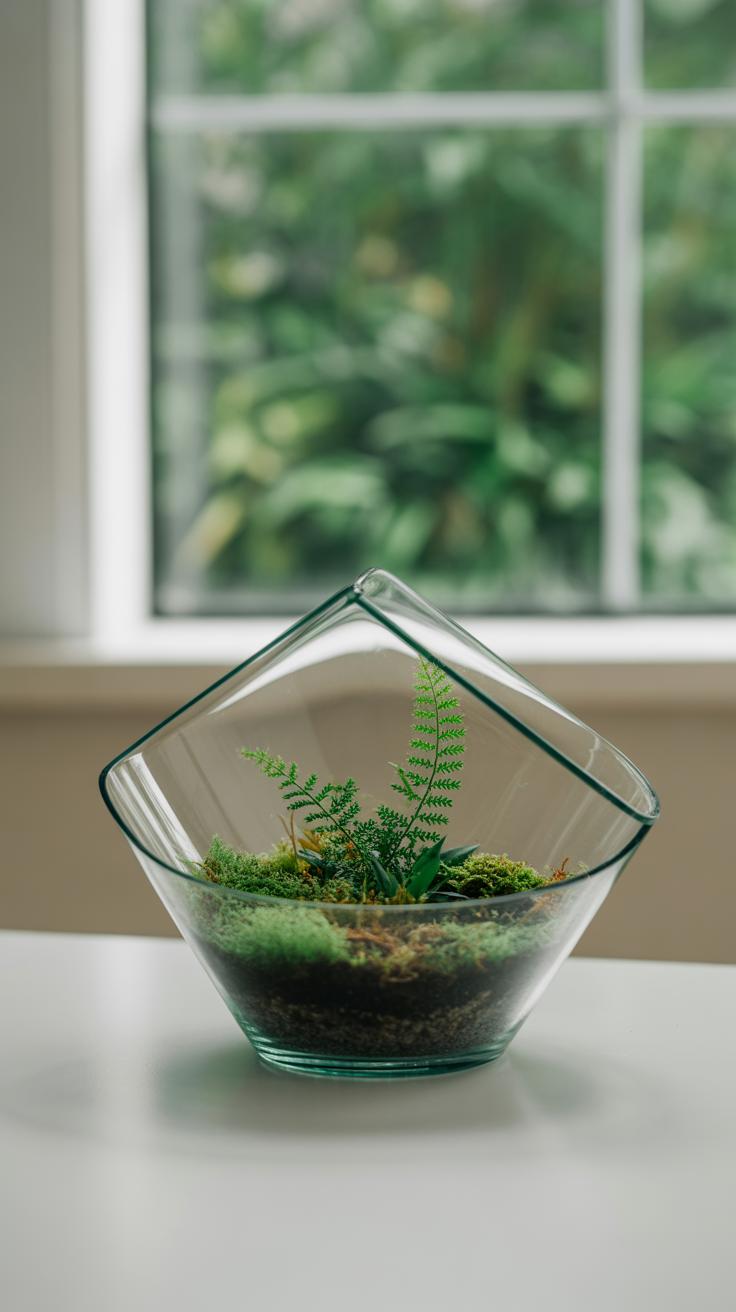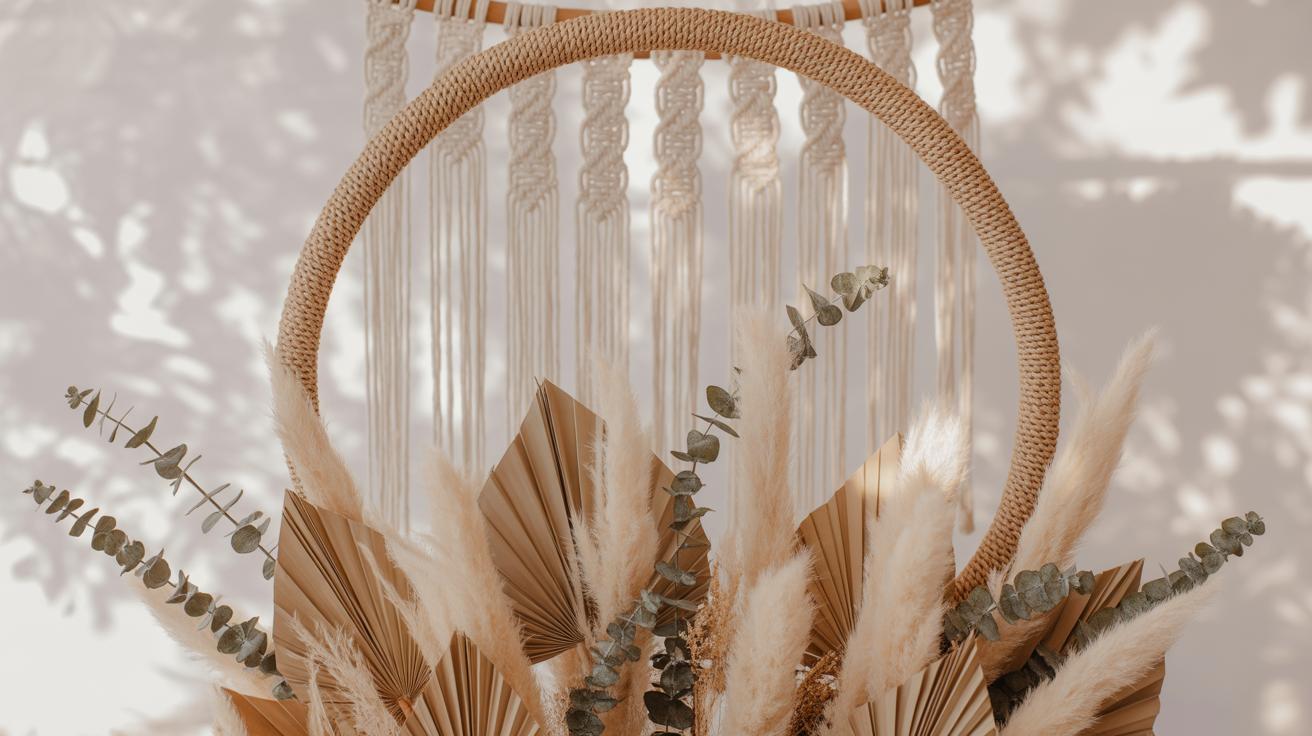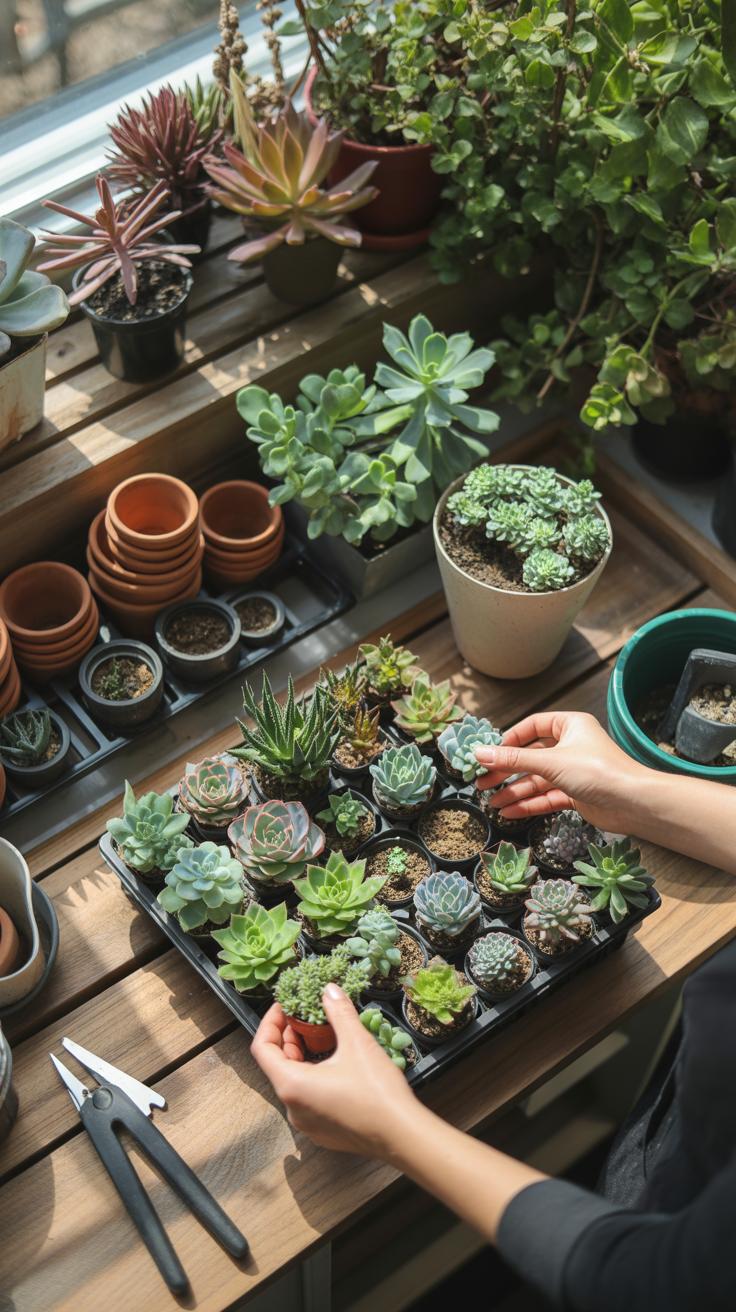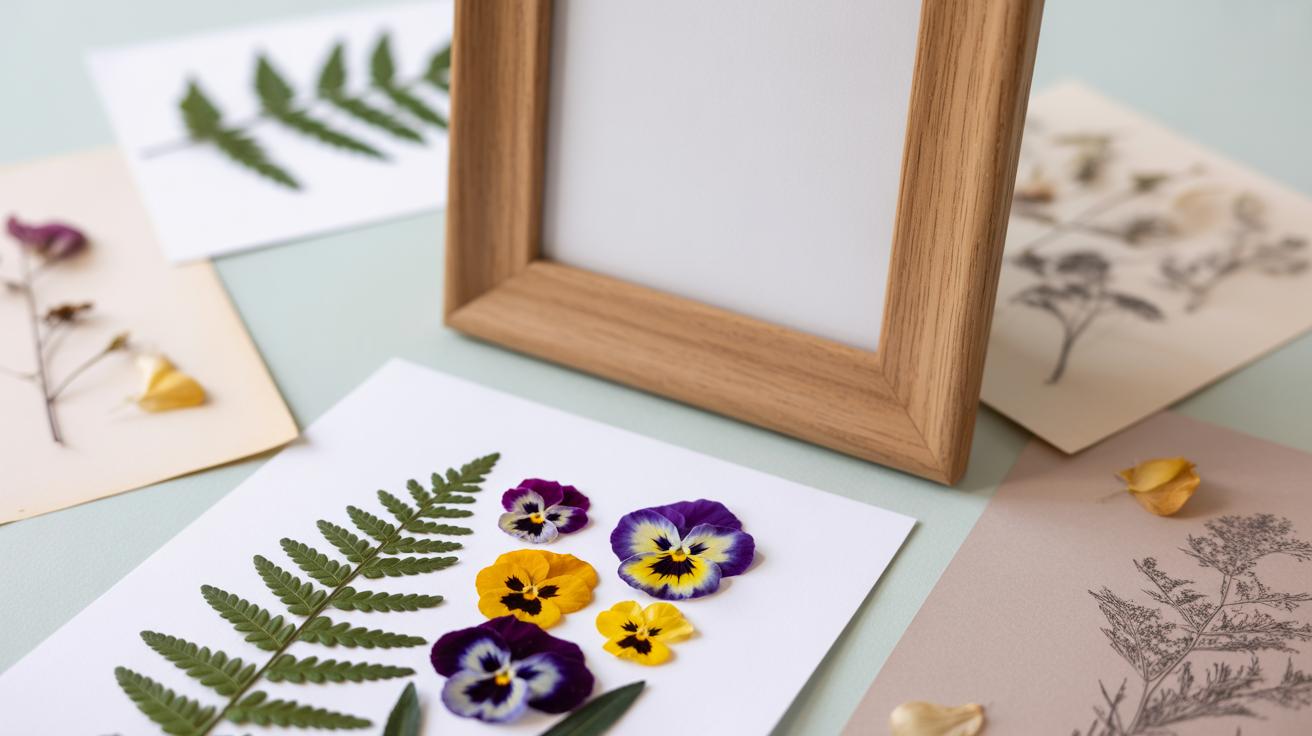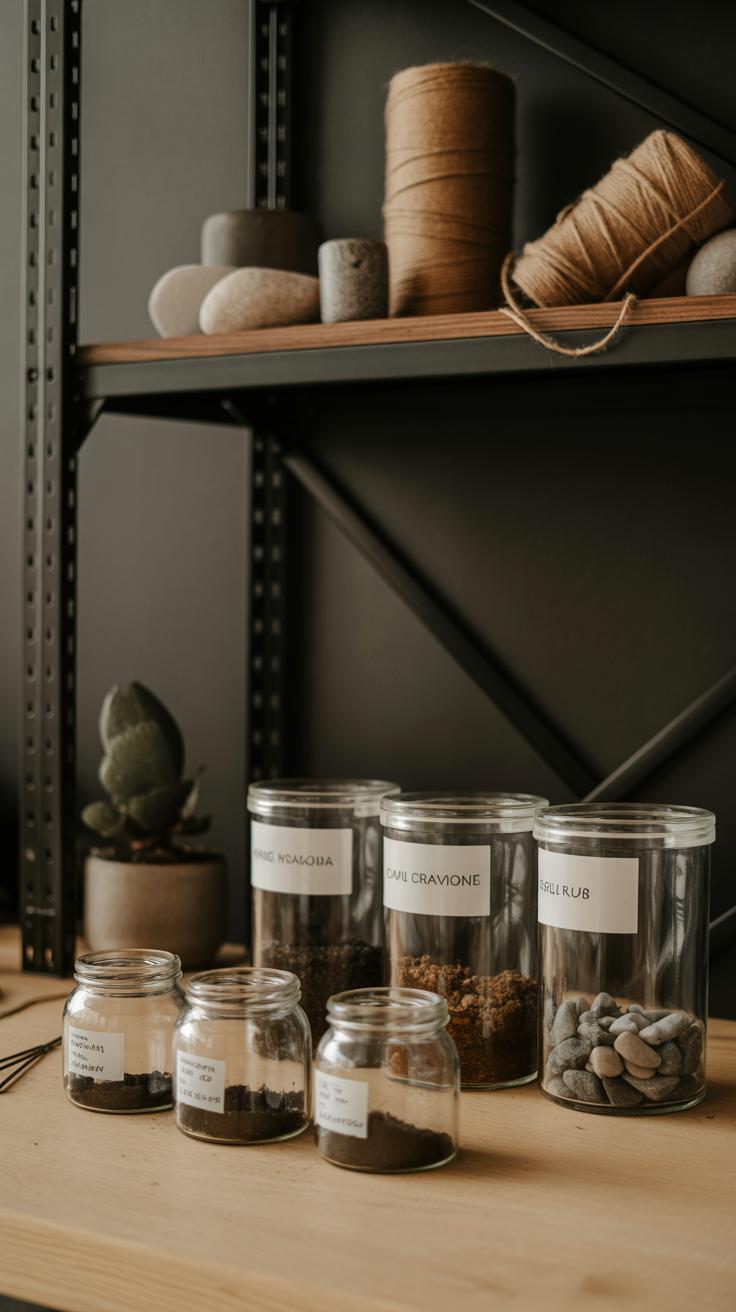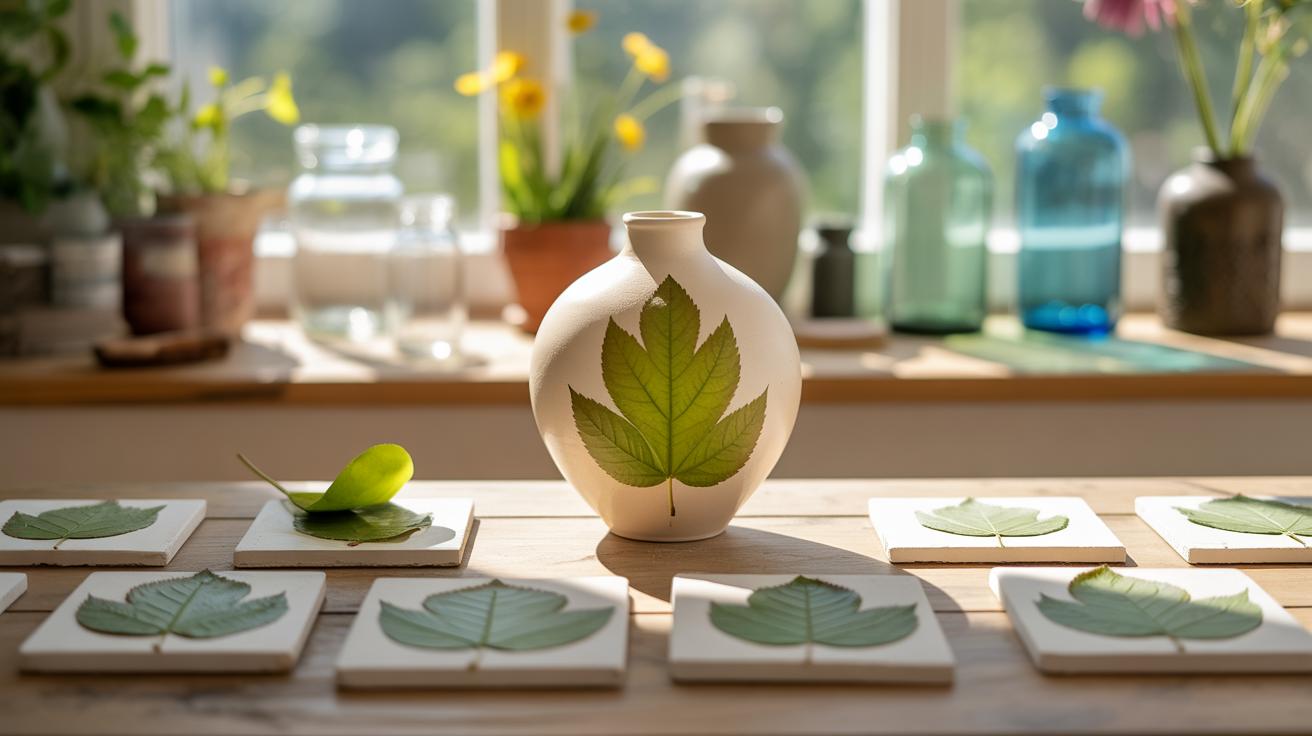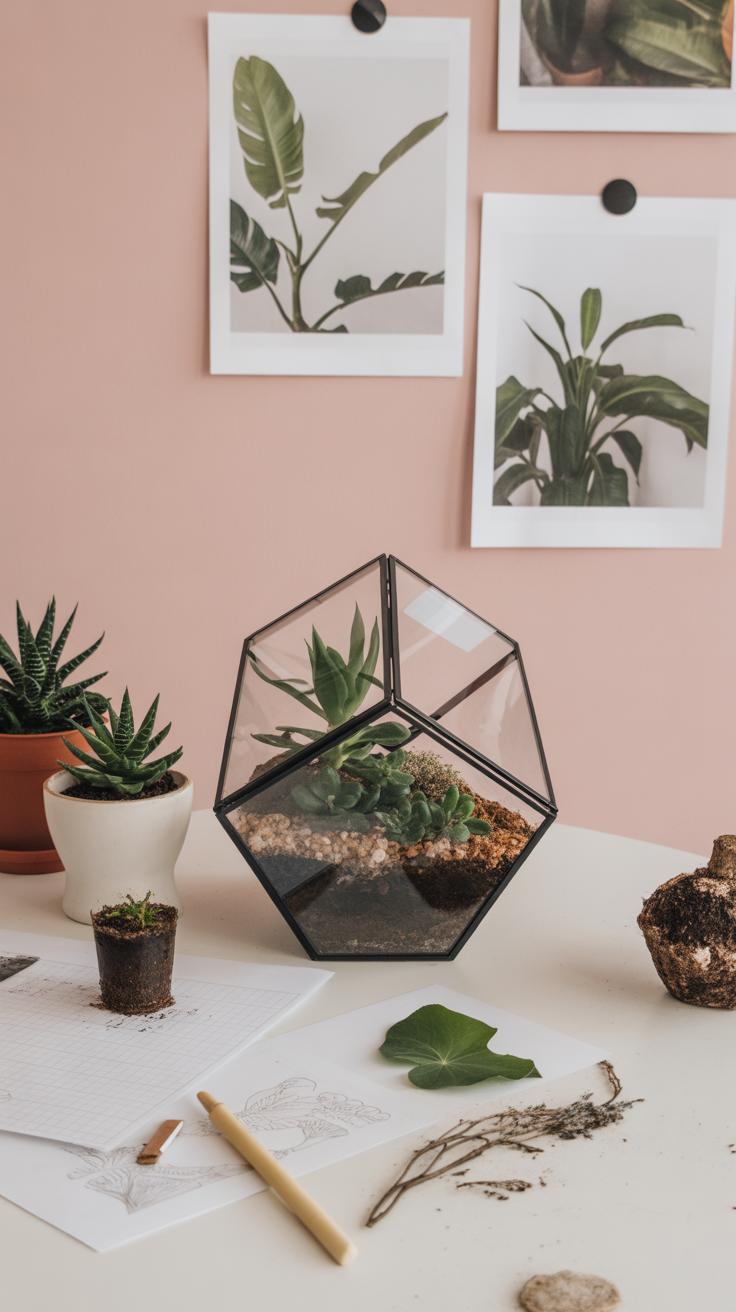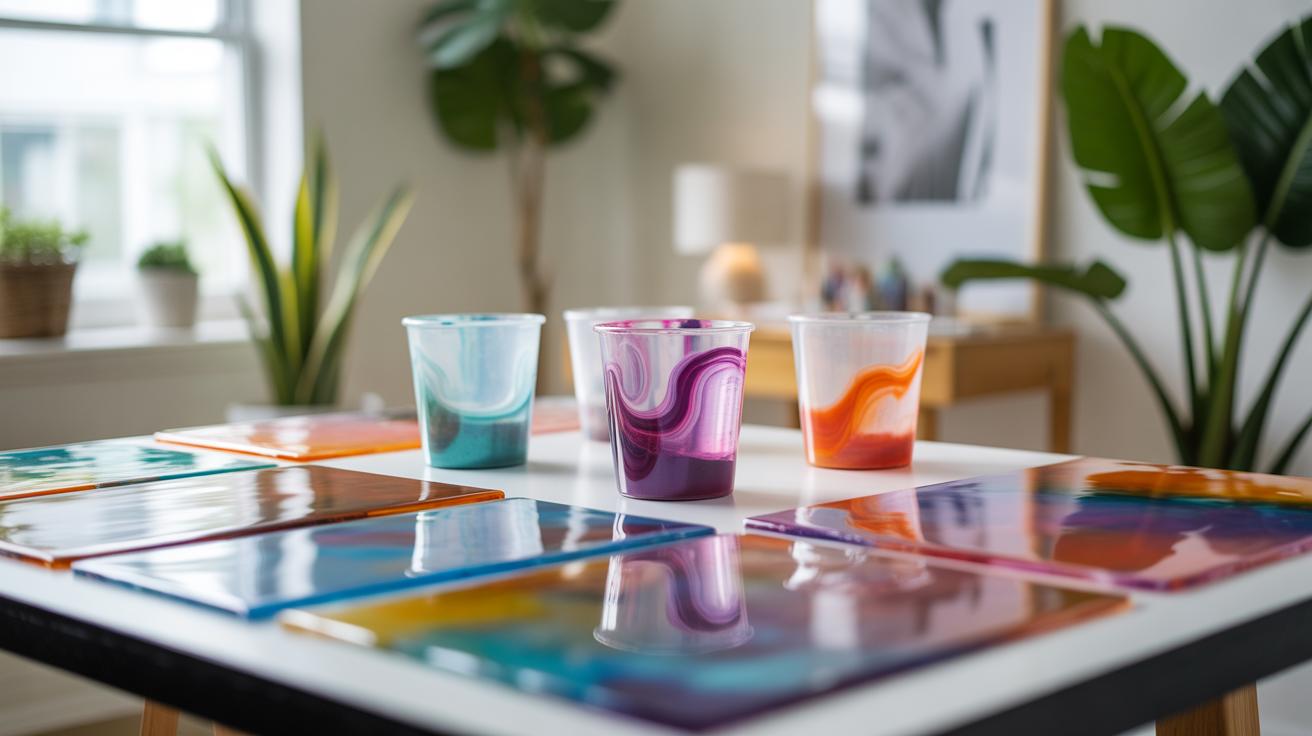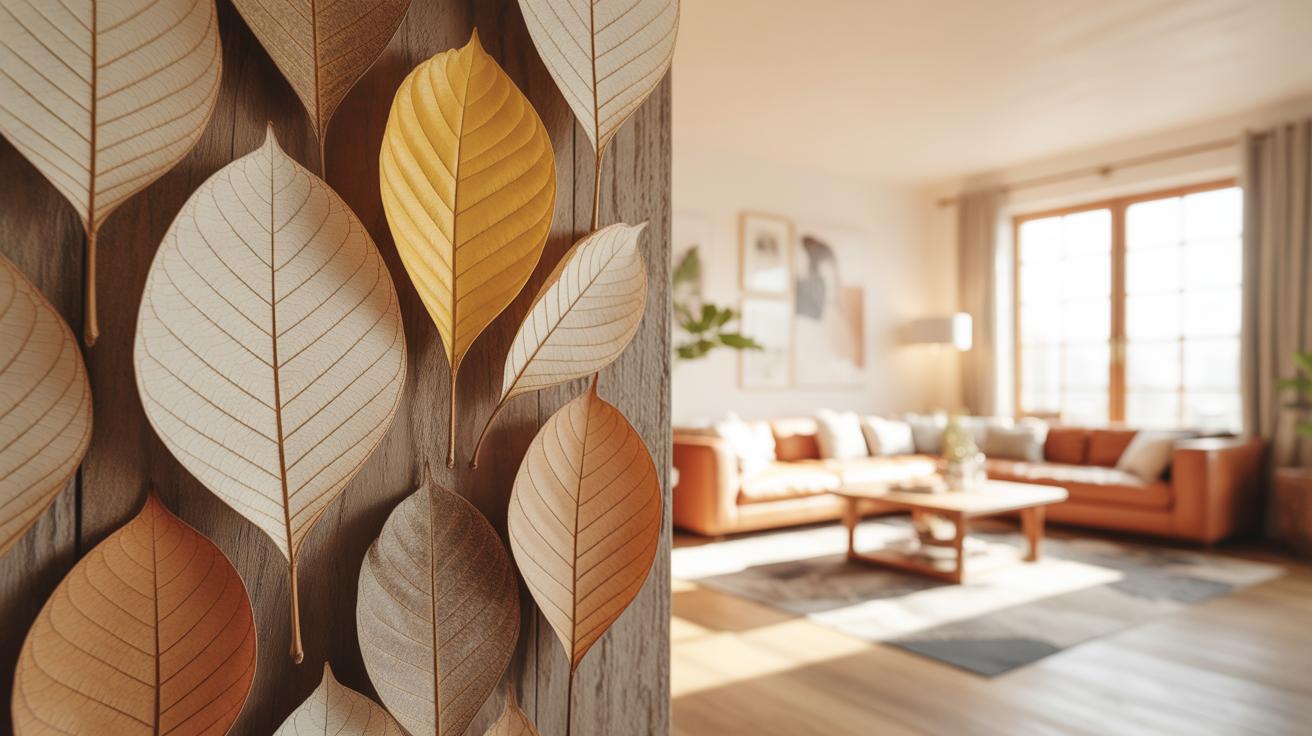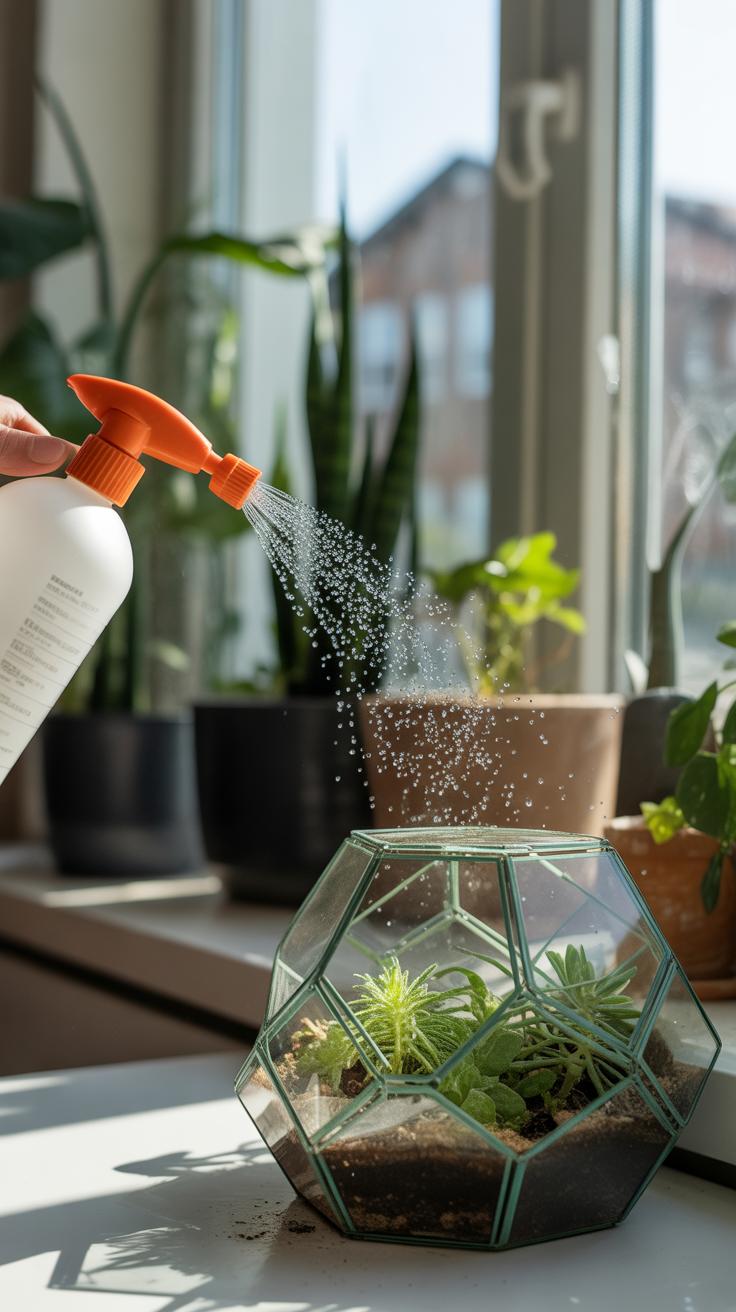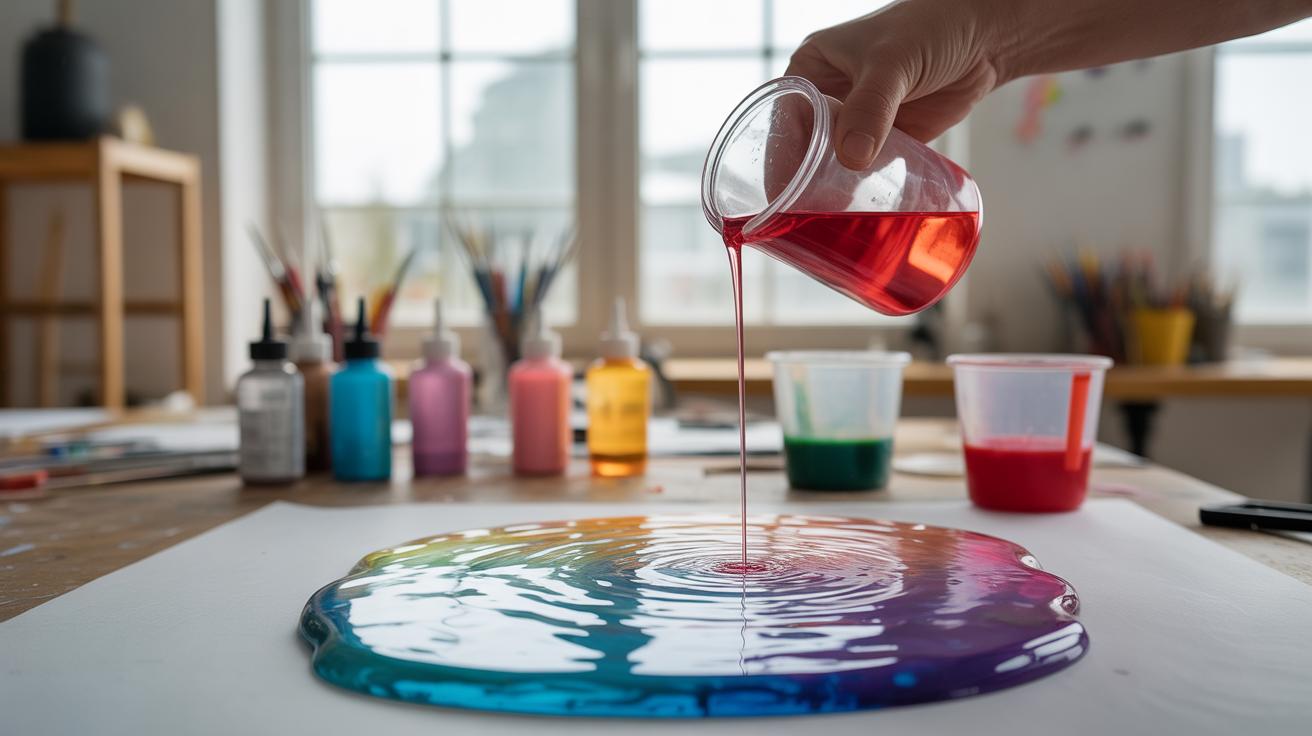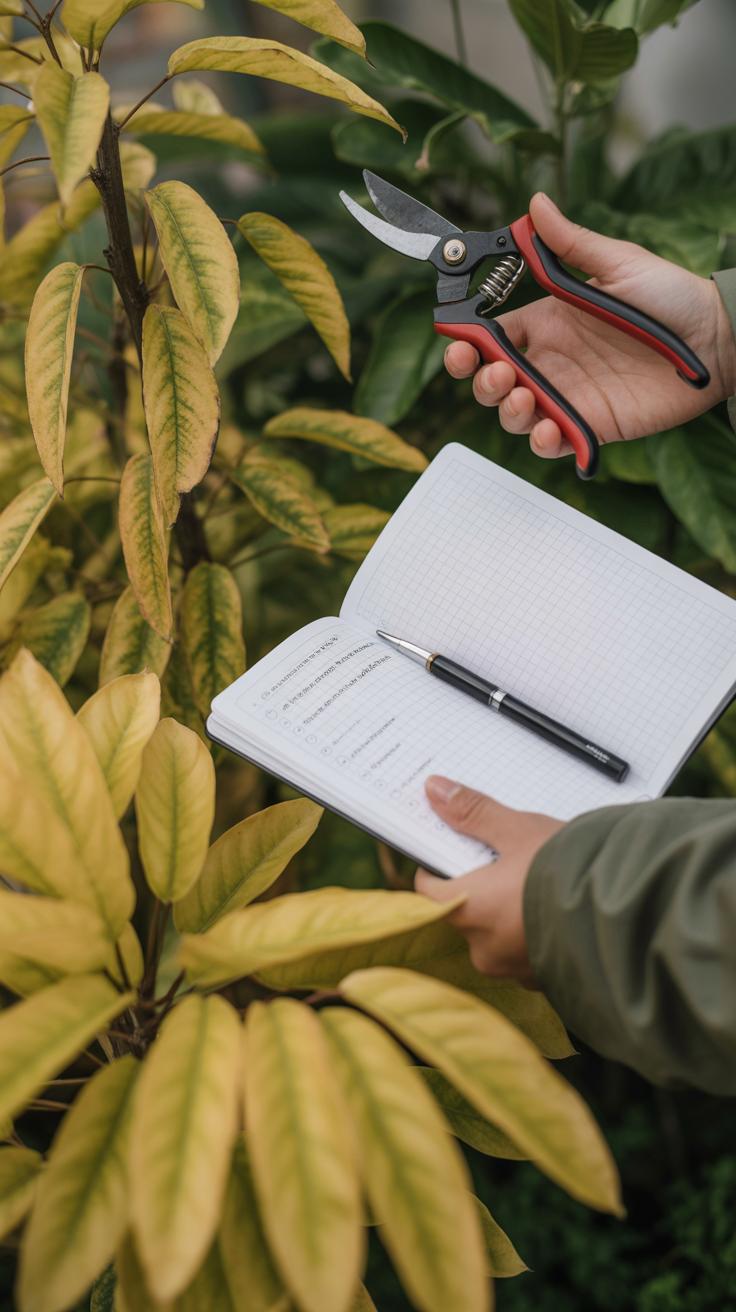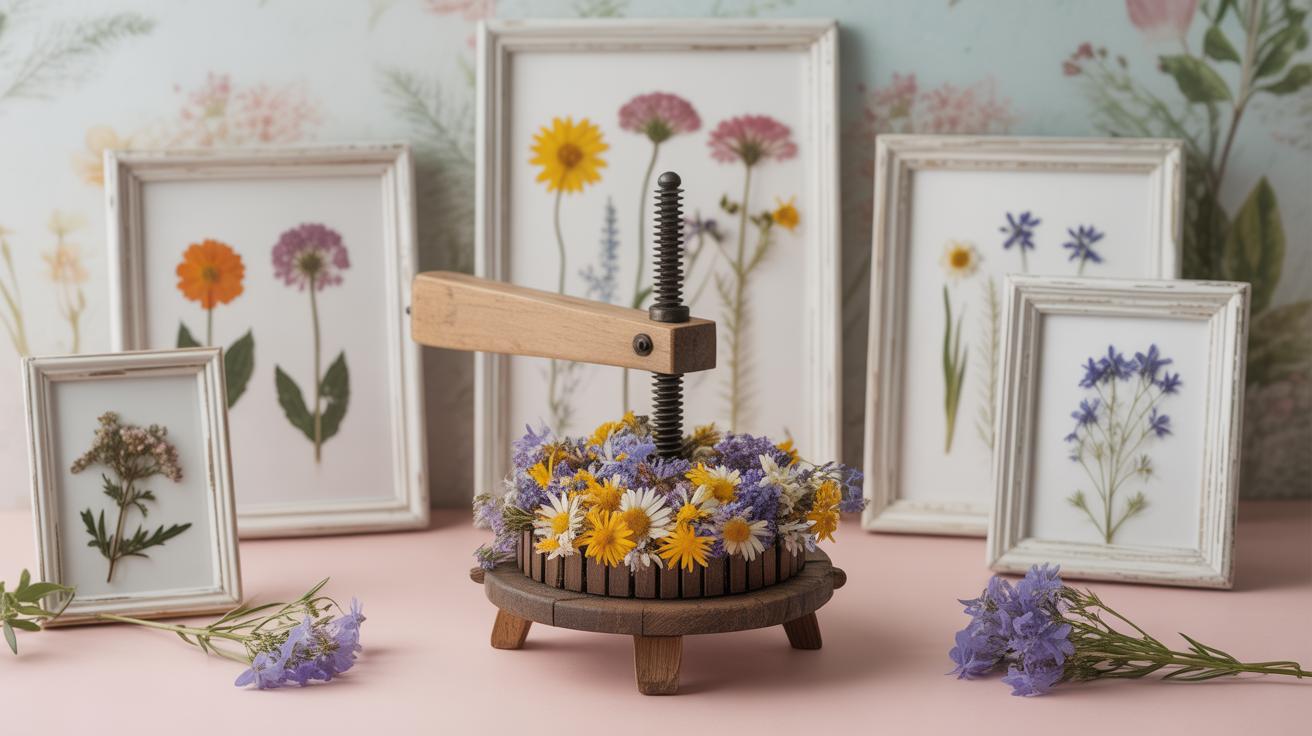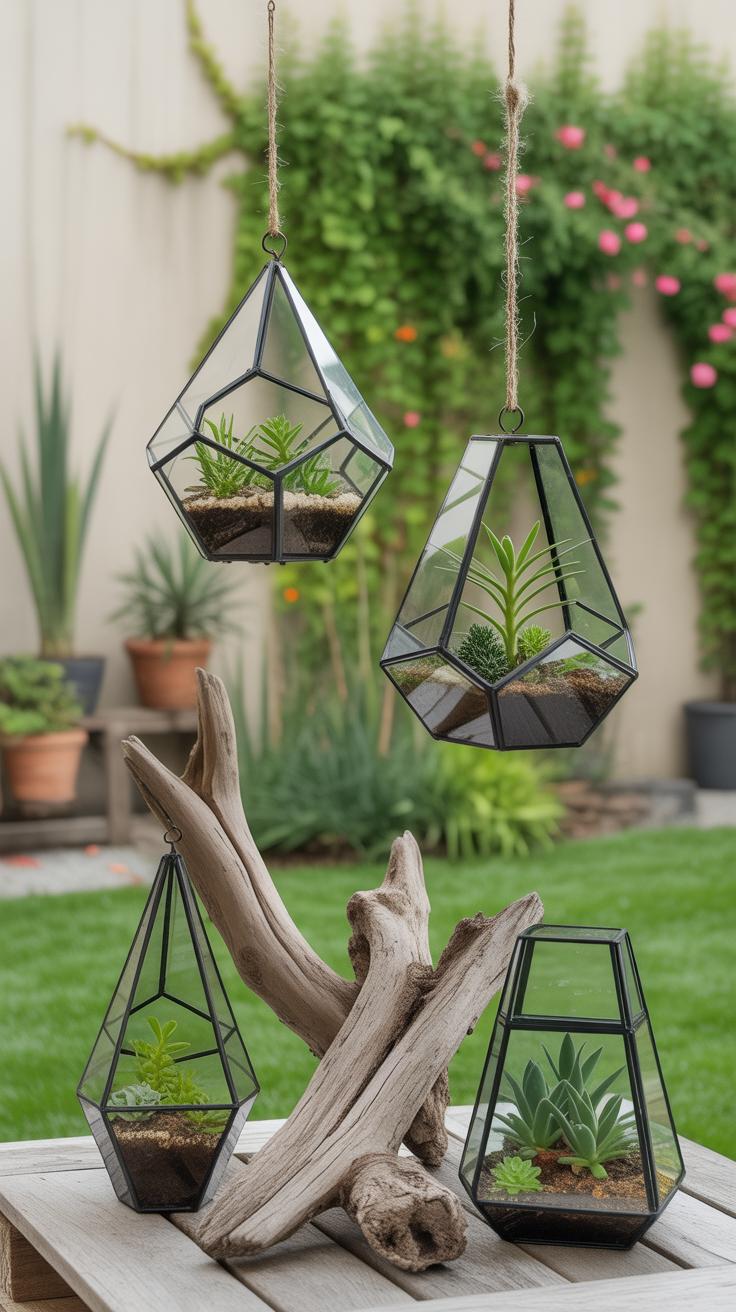Introduction
DIY Modern Plant Art Terrarium Display brings nature and creativity into your living spaces. Making plant art with terrariums is a fun way to decorate your home. It involves choosing plants and designing beautiful glass displays that show off your green art.
This article guides you from picking the right plants and containers to caring for your terrarium. You will learn practical steps and tips to make your plant art thrive. Whether you are new or experienced, this guide helps you grow and show your indoor plants creatively.
Understanding Plant Art and Terrariums
What is Plant Art
Plant art is about more than just placing plants in a room. It’s the practice of growing and arranging plants in creative ways, often using containers or unique displays. You could say it’s both gardening and decorating rolled into one. The idea is to treat plants like living sculptures, giving them shapes and settings that catch the eye and add personality to a space. In containers like pots, bowls, or jars, plants become part of an intentional design rather than just greenery.
Terrariums are a form of this plant art. They enclose plants inside glass or clear containers, turning them into tiny, self-contained environments. Watching a well-made terrarium feels different from seeing a regular potted plant; it draws you in, asks you to look closer. There’s something quietly captivating about fitting a miniature garden inside glass walls, almost like holding a secret world in your hands.
Benefits of Terrariums
Terrariums offer a lot of advantages which make them a popular choice when decorating with plant art. For one, they save space—perfect for apartments, desks, or shelves where you can’t fit large pots. The enclosed environment inside the glass keeps humidity high, meaning you can often water less frequently and still keep plants happy.
They’re generally low maintenance. Once set up, terrariums create their own little ecosystem that needs minimal fiddling. And visually, they bring a neat, modern look that works with many styles. Light passes through the glass, highlighting every leaf and stone inside. This detail makes them more than just plants. They’re small displays of life and design you can shift around or customize as you like.
People also use terrariums because they offer a unique way to express creativity. Arranging different textures, shapes, and colors inside a confined space pushes you to think differently about plants. You can craft a natural scene or an abstract one, following your mood or style.
Selecting Plants for Your Terrarium
Picking the right plants for your terrarium can feel a little tricky at first. You want something that fits not just the space but the subtle micro-environment you’re creating. Size really matters—a sprawling plant might overwhelm a small container, while tiny mosses can get lost in a big open terrarium.
Think about how much care you’re willing to give. Some plants are hands-off, while others need a bit more attention. Succulents, for example, usually thrive with minimal watering and bright light. Air plants, on the other hand, don’t need soil but do need regular misting. Mosses are more about humidity and gentle shade.
Matching plants to your terrarium style is also key. Open terrariums suit drought-tolerant plants since they dry out faster. Closed terrariums keep moisture locked in, which benefits tropical plants that like humidity. If you ignore this balance, you might watch your plants struggle rather than flourish.
Here’s a quick look at some reliable options:
- Succulents—great for sunny, dry, open setups.
- Air plants—flexible but need airflow, so open containers work better.
- Mosses—perfect for shady, humid closed terrariums.
- Small ferns or fittonia—do better in moist, humid environments inside closed terrariums.
When I started, I underestimated how much environment controls plant health in terrariums. I guessed that a shady spot would suit everything equally, but my succulents immediately showed their disappointment! It’s worth pausing to consider which plants meet your terrarium’s light and moisture before you decide.
Choosing Containers and Materials
Picking the right container is more than just finding something that looks good. It sets the stage for your plants to thrive or struggle. For example, glass jars with wide openings give plants easy airflow but might dry out faster. Bowls tend to hold moisture longer but can restrict airflow, which some plants don’t like as much. Geometric terrariums have sharp angles and corners that can create microclimates—sometimes great, sometimes tricky depending on what you grow.
The size also matters. Smaller containers limit root space, so tiny or slow-growing plants fit best. Larger ones allow more layering and diverse displays, but managing humidity can get complicated. I once tried a huge glass globe, and the moisture stayed trapped too long, which really surprised me.
When layering your terrarium, think about these essentials:
- Drainage stones: They keep water from pooling at the bottom, preventing root rot even if you overwater a bit.
- Activated charcoal: It filters the air inside, reducing smells and harmful bacteria.
- Soil: This depends on your plant choices but generally should be well-draining. Succulents need sandy soil; tropical plants prefer richer, peat-based mixes.
You might add decorative stones or moss for texture and color contrast, but these don’t affect plant health much. Still, they influence how you see your little ecosystem every day.
Choosing materials isn’t a one-size-fits-all situation. Think about your environment, your plant’s needs, and your own patience level. It makes a difference in how your terrarium lives and evolves over time.
Designing Your Terrarium Layout
When planning your terrarium, it helps to think beyond just fitting plants inside a container. How you place each element affects the whole look, and even small shifts can change the vibe dramatically. You might want taller plants toward the back to create depth or let smaller, rounder ones peek out in front.
Try grouping plants with contrasting textures. For example, pair spiky succulents with smooth-leafed mosses. This contrast catches the eye without overwhelming the space. Color mixes also matter—greens aren’t uniform, so look for different hues like silvery greys or deep emeralds to add layers of interest.
Layering comes into play as well. Think of the bottom as a foundation—gravel, soil, maybe some charcoal—then build upward with plants arranged by height and bulk. You don’t have to be exact, but sketching a rough plan before starting helps avoid scrambling once you have your materials.
Sometimes, I’ve found that a simple pencil drawing, just shapes and plant placements, stops me from overcrowding my glass. It’s tempting to cram in every pretty leaf, but keeping space helps each plant stand out. This also makes watering and maintenance a bit easier.
Decorative touches finish the design. You could add tiny figurines, smooth stones, or shells. These extras can enhance a theme, or just bring unexpected texture. Don’t overdo it though—too many items can distract from your plants, which should still be the main focus.
What kind of small elements make you pause and want to look closer? Maybe that’s a good place to start. And remember, your terrarium doesn’t have to be perfect; sometimes a little randomness brings charm.
Step By Step Terrarium Assembly
Start by gathering all the materials you’ll need: a clean glass container, small stones or pebbles, activated charcoal, potting soil suited to your plants, and of course, your chosen plants. It might seem straightforward, but sometimes sorting everything beforehand saves a lot of fumbling later on.
Begin with a layer of small stones at the bottom. This creates drainage, which your plants depend on to avoid soggy roots. Next, add a thin layer of activated charcoal. This keeps the environment fresh by filtering the air and water. You might wonder if charcoal is really necessary, but trust me, it makes a difference.
After that, gently spoon in a good amount of potting soil. Think about the depth your plants’ roots will require—usually around two to three inches, but it depends on the types you selected. Once the soil settles, create small holes where each plant will go. Place them carefully, avoiding overcrowding, which can be tempting but rarely works well.
Once planted, sprinkle a bit of moss or decorative gravel over the soil to keep it looking tidy and natural. Now, clean the glass container inside and out with a soft cloth to remove smudges and soil spots, but don’t disturb your plants. Finally, water sparingly—just enough to moisten the soil but not enough to pool at the bottom. You might need to adjust watering later depending on how your terrarium settles.
For the last touch, feel free to add small decorative elements like tiny figurines or natural objects. These shouldn’t overwhelm the plants but enhance the overall display. Sometimes, leaving a little bare space can be as effective as filling every inch. What do you think would suit your arrangement best?
Care and Maintenance of Your Terrarium
Taking care of your terrarium plants means finding a balance that isn’t always straightforward. Different plants have slightly different needs, and it’s easy to overthink watering or light. Some plants thrive with just a little water, while others may need more frequent misting. Pay close attention to the soil—if it’s soggy, you might be watering too much. If it looks bone dry for days, that could be a sign to add a splash of water. It’s not an exact science and sometimes you have to adjust based on how your specific terrarium looks and feels.
Light plays a big role. Most terrarium plants do best with bright, indirect light. Direct sun through a window can scorch leaves quickly, but some warmth is beneficial. If your terrarium is far from a window, consider a small grow light. These lights can mimic daylight, but they won’t replace natural sunlight completely. Many people forget that even artificial light needs to be on for several hours daily. I’ve found 8-10 hours works well, though your plants might ask for a bit more or less.
Pruning is sometimes overlooked but crucial for keeping your terrarium tidy. Dead leaves or overcrowded stems can lead to mold or rot spreading faster than you’d expect. Snipping away these less healthy parts helps air circulate and encourages growth in the healthy sections. If you’re unsure when to prune, it’s usually safe to trim when plants start to look crowded or leggy. You don’t need fancy tools—just small scissors or nail clippers often do the job.
Overall, caring for a terrarium invites a bit of trial and error. You might have to tweak things after watching your plants for a week or two. Think of it as a quiet conversation between you and your tiny indoor garden.
Troubleshooting Common Problems
Dealing with Mold and Fungus
Mold in terrariums can feel like an unavoidable nuisance, but it’s not always hopeless. Often, it shows up when moisture lingers too long or airflow gets stuck. One quick fix is to open your terrarium more frequently to let it breathe—just a few minutes every day can help. I’ve noticed that reducing watering, even by a bit, cuts mold growth significantly.
Removing mold might require gently scraping off affected areas with a clean tool. Sometimes, wiping down the glass also helps. If it persists, try mixing a mild solution of water and a bit of apple cider vinegar to spot-treat the mold, but test carefully on plants first. It’s a fine line between cleaning and stressing your greenery.
Managing Pests
Pests inside a terrarium can sneak up quietly—aphids, gnats, or even tiny spiders might appear. Instead of reaching for harsh chemicals, natural methods usually work better here. Introducing small amounts of neem oil diluted with water can keep pests in check without hurting the plants, though be cautious; some plants react poorly to neem.
Another approach is to isolate the infected terrarium from others and manually remove pests with a damp cloth or small brush. I once resorted to introducing a tiny beneficial insect, like a ladybug, but that can be tricky when space is tight. Sometimes, just adjusting the humidity and removing dead plant bits starves out pests.
You might wonder—is pest control inside a closed terrarium always possible without some plant stress? Probably not entirely, but gentle, consistent care goes a long way.
Inspiring Ideas for Unique Terrarium Art
Giving your terrarium a personal touch can be as fun as planting itself. If you think about it, the possibilities are quite broad—maybe too broad, which makes deciding a bit tricky. You might try picking a theme that sparks your interest. For example:
- Desert vibes with succulents, sand, and tiny stones arranged like a miniature plateau.
- A rainforest corner featuring mosses, ferns, and droplets of water to mimic humidity.
- A fairy garden combining small figurines, colorful pebbles, and delicate, shade-loving plants.
These themes help guide your plant choices and decoration style. For a small desert terrarium, I once added a tiny clay cactus—it wasn’t alive, obviously, but it added an unexpected twist that made me smile every time I looked at it.
Creating your own decorations is surprisingly straightforward. Simple materials such as twigs, colored glass, or even painted rocks can become eye-catching elements. One weekend, I glued some miniature wooden benches and a tiny handcrafted lantern to a moisture-loving setup—it suddenly felt like a secret spot in a storybook.
Have you considered mixing live plants with crafted pieces? I won’t say it’s for everyone, but it does spark conversations when friends spot the little handmade details tucked in among the leaves. What little project could you start that might change how you see your terrarium?
Conclusions
Creating DIY Modern Plant Art Terrarium Displays lets you blend nature with art simply. Once you know how to choose plants and design your terrarium, you can make personal displays that brighten any room. Detailed steps help you keep your plant art healthy and fresh over time.
Enjoy trying out different styles and plants in your terrariums. This project fits anyone who loves plants and wants to add a natural touch to their home. Start your plant art journey today and see how easy and rewarding it can be.

